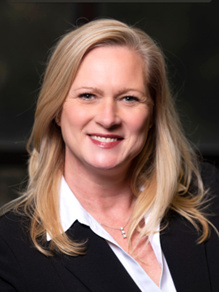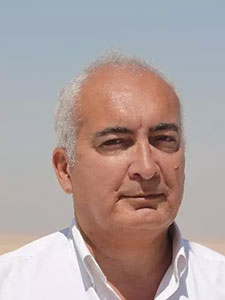Use Your Data to Stay Ahead of the Curve
 Kami Keim is Director of Product Development at Ovation Data. Her 27+ years of experience within the oil & gas sector includes organizations such as Schlumberger, Equinor and Spinnaker Exploration. She has held leading roles in transforming information management strategies and was the custodian of one of the largest seismic databases in the Gulf of Mexico. Keim’s specialist expertise is in geophysical and geological data management and technology.
Kami Keim is Director of Product Development at Ovation Data. Her 27+ years of experience within the oil & gas sector includes organizations such as Schlumberger, Equinor and Spinnaker Exploration. She has held leading roles in transforming information management strategies and was the custodian of one of the largest seismic databases in the Gulf of Mexico. Keim’s specialist expertise is in geophysical and geological data management and technology.
Oil companies are entering their next chapter of grappling with big data, and taking it beyond a previous focus on data management. They are still evolving their approaches to access and security, and have learned a lot in the process. They understand more fully the complexities of finding their data, sharing it, and addressing its deteriorating condition. Now, innovative teams are looking to reap greater ROI from their organization’s data, establish their big data in its rightful place as a profit center, and explore ways to actually monetize it. Advances in AI and machine learning are accelerating this evolution.
Previous challenges remain
The energy industry recently celebrated 100 years of using seismic reflection data in exploration, and that represents a huge amount of information and much of it predates digital data deliveries. A great deal of data is contained in old media and unusable formats, so companies need help in making data readable, accessible, and usable. Even when the data is online, many companies still struggle with finding what they need.
Technology to the rescue
Fortunately, expertise is available to meet the challenge. For example, an oil company wants to leverage data trapped in an old or proprietary seismic format but is unable to migrate it into the latest SEG-Y format for use in today’s software for analysis. Fortunately, we can extract the data from old media, migrate it from outdated formats, and convert it from locked data into a ready-to-run resource. Subject matter experts perform quality control by cleaning out bad shot points, reading wavelets and shot point locations, and creating a current SEG-Y file to load into interpretation software where it can be used.
A more extreme scenario relates to an oil company with valuable data contained in tapes that were submerged under water for a full year after Hurricane Katrina. The client viewed the situation as insurmountable, but we recovered 100 percent of the data. Our technology is not limited by format, and we can read data contained on film, paper, microfiche, or digital, and make it ready to run.
Transcription buyers beware
Data must be readily available and in a usable format to avoid delays in making data-driven decisions. Yet some transcription providers perform only a bit-to-bit copy of clients’ data from old media, and implement quality control and reformatting just when the data is actually needed. This leaves decision makers waiting for data to be found and then restructured before it can be used. This approach is like fixing a hole only when a leak arises, rather than ensuring the roof remains waterproof.
In addition, many of these same companies place a proprietary wrapper around datafiles which clients cannot penetrate without buying additional services even after they have paid for transcription, storage and maintenance. Be sure to select a service provider that stores data in native formats without wrappers unless encryption is specifically requested. Fortunately, Ovation has developed methods to break wrappers applied by other storage vendors, and we can unlock data for clients to use in a new format going forward. Also watch for egress fees (which we view as “ransom”) charged by some providers in order for clients to retrieve their own data.
Selecting a data management partner
Reputation and the quality of the client experience are so important. Clients want a competitive, differentiated, and customized offering of services that solves their specific needs along with a single point of contact and personal one-on-one interaction.
Everyone wants their strategies to be supported by top-notch approaches and not lagging behind, so another key aspect involves partnerships. Ask your prospective data management partner how it leverages its own partners’ latest technology for the benefit of its clients. Who are they working with to integrate the best of new technology and the highest level of innovation, deployed as rapidly as possible?
Advantages of AI and machine learning
Wanting more than storage and disaster prevention, companies want to make data available for new tools such as AI and analytics but data must be in the proper format and readily accessible to leverage these new technologies and unlock its true value. Only then can an AI system do the heavy lifting of personnel and time-intensive operations, or can an analytics package sum up and display vast data quantities in meaningful, automated displays that facilitate timely decisions.
Traditionally, someone had to painstakingly comb through the data set and look for trends, often misinterpreting or missing key indicators altogether. AI systems are trained to search for fundamental indicators and highlight them. This technology holds great promise in many areas, seeing more of what is present now and predicting what may appear later.
Extract data value and generate revenue
One way for companies in the energy industry to transform idle data into a profit center is by disseminating data sets and then offering potential buyers a flavor of data available for purchase and a space to view it. Companies can decide to re-license their proprietary seismic data from certain plays where they are not currently drilling. Our software can vectorize a seismic section and well logs, take it from analog to digital, create meta data, then make it fit for purpose. In short, we can vectorize your seismic data for use in new exploration software, and we can reformat well data to read trends. We can digitize your x-ray images to feed AI models, migrate your media files to take advantage of the newest remastering techniques, and more.
What’s next?
Taking data management to the next level means driving its evolution from transcription to digital and beyond. Good data governance policies run the gamut from how data comes in, who encounters it along the way to extract value and add value, to determining its final resting place and capturing metadata that enables access and provides relevance. On the horizon are even more effective ways to share data and use our private cloud to reduce the burden. Excellent expertise, unique proprietary tools, and exciting innovation will continue to improve analysis and leverage the growing benefits of AI and machine learning. The future is indeed bright!
